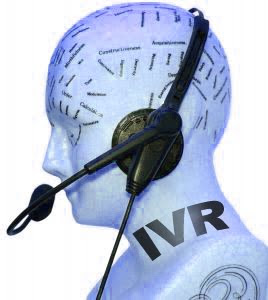
As the user’s interaction with the database is predetermined by what the IVR system will allow the user access to, IVR technology does not require human interaction over the telephone. Example, banks and credit card companies use IVR systems because their customers can receive up-to-date account information instantly and easily without necessarily speaking to a person. IVR technology is also used to gather information, such as telephone surveys in which the user is prompted to answer questions by pushing the numbers on a touch-tone telephone.
Generally the system plays pre-recorded voice prompts to which the person presses a number on a telephone keypad to select the option chosen, or engage in simple answers such as “yes”, “no”, or numbers in answer to the voice prompts. The latest systems use natural language speech recognition to interpret the questions that the person wants answered. One of the newest trends, Guided Speech IVR, integrates live human agents into the design and workflow of the application to enable speech recognition with human context.
Other innovations include the ability to speak complex and dynamic information. Examples would be an e-mail, news report or weather information using Text-To-Speech (TTS). TTS is a computer generated synthesized speech and is no longer the robotic voice people associate with computers. Real voices are used to create the speech in tiny fragments that are glued together before the caller hears it.
IVR systems can be used to create and manage many services such as telephone banking, order placement, caller identification and routing, balance inquiry, and airline ticket booking. Voicemail systems are different from IVR systems because they are a one-way communication tool (the caller leaves a message), but IVR systems attempt two-way interaction with the caller. Automatic call distributor (ACD) systems are often the first point of contact when dealing with any larger business, and can be used in place of more expensive IVR systems. IVR systems are mainly used at the front end of call centers to identify what type of service the caller wants and to extract numeric information such as account numbers as well as provide answers to simple questions like account balances or just to allow pre-recorded information to be heard.
IVR systems are often referred to as being unhelpful and difficult to use because of the poor design and lack of appreciation of the callers’ needs. A fully functional IVR system should connect callers to their desired service promptly and with minimal flaws.
IVR call flows are created in a variety of ways. Older systems, which depended upon proprietary programming or scripting languages, and modern systems, which are structured similar to WWW pages, using the VoiceXML or SALT languages. This allows any Web server to act as an application server, enabling the developer to focus on the call flow. Developers need not require specialized programming skills, as any Web developer already have the tools needed to create an IVR call flow.






0 comments:
Post a Comment